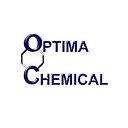A Peek Into The ALD Manufacturing Process
The atomic layer deposition (ALD) method has advanced dramatically in recent years. Classified as a subset of chemical vapor deposition (CVD), many sectors are currently taking advantage of the many benefits that come with this technique. As a basic explanation, ALD simply refers to the technique used to add thin films of a specific substance on a substrate. The process involves many ALD precursors being applied to the surface of a substrate, one after the other.
Highlighting The Steps in The ALD Process
Chemisorption is the process of providing a precursor gas that will adhere to all surfaces as a monolayer. This describes each time a precursor is applied to the substrate. Saturation follows when a monolayer of the first gas completely covers the surface. Excess gas is pumped away, and a second gas is injected, which condenses and chemisorbs on top of the first layer. The surplus second gas is removed, and the procedure is repeated to deposit a second monolayer. This cycle can be repeated as many times as needed to deposit the complete coating thickness required.
One of the most notable characteristics of ALD as a technique is that the deposited coating conforms to the substrate surface. Conformal in this context means that the layer follows the surface contours and has the same thickness over the whole surface, regardless of the surface’s existing roughness or flaws. The ALD precursor’s covalent bonding provides strong adherence. The semiconductor industry uses this procedure because conformal coating may coat the sides and bottom of trenches and the top surfaces.
Atomic Layer Deposition Applications
Atomic layer deposition offers a wide range of applications, which is why it has become a popular technology for developing thin films and nano-coatings. Here are some of these applications:
ALD Thin Films
One of the most common applications for ALD thin films is in the semiconductor manufacturing business, as electronics are getting smaller. The ALD thin films and coatings enable these items to be even smaller while maintaining the high-performance standards we expect in consumer electronics.
Nanocoating
The use of ALD to deposit simple and intricate nano-coatings of metal oxides around each minuscule particle that comprise the coating (of powder) on the anode and cathode conductors of lithium-ion batteries is becoming more common. This is because it has been proven to increase the battery’s lifetime and capacity and vastly improve safety.
The improved use of ALD in the manufacture of lithium-ion batteries is also due, in large part, to many companies running ALD precursor manufacturing at a large or small scale. This has caused it to become a standard and commercially viable process for battery manufacturers. It is no longer a process belonging to research laboratories.
Nano-coating catalysts are another aspect of ALD precursor manufacturing. Coating with this process results in more thermally-stable catalysts. This property allows for a modification of the catalyst’s chemical and physical properties and specific selectivity according to process conditions.
Biomedical sector
Atomic layer deposition precursor manufacturing is also gaining traction in the biomedical sector, particularly with the increased usage of nanoporous materials in tissue engineering, implants, and drug delivery.
Conclusion
Optima Chem offers a unique ALD precursor manufacturing process tailored to each client to meet specific needs. Do not hesitate to contact us for any information about our ALD precursors or processes.
